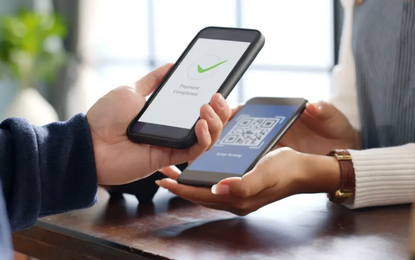

A push towards interoperability is driving strong uptake of digital payments in Argentina, opening the way to greater use of QR codes
Argentina set in motion a system of interoperable QR code payments on December 7th, 2020. Just one month later - January 2021 - users made more than a hundred thousand transactions worth AR$ 300 million pesos (more than US$ 3.2 million, approximately).
The Central Bank of Argentina (BCRA) expects the adoption of electronic wallets to continue to rise as a result. The most highly-used wallets in the market have already joined the trend, as is the case of Cuenta DNI, from Banco Provincia, and BNA+, from Banco de la Nación Argentina.
By implementing interoperable QR codes (also known as Transfers 3.0), digital wallets have grown and positioned themselves strongly in the payments market, generating millions of transfers among more than 30 institutions.
The race to join the QR trend is growing rapidly, propelled by government incentives, the decline in the use of cash, the impact of everything digital and, especially, the convenience that the tool provides to its users.
With this new payment mechanism, users benefit directly from 24/7 operations, as well as completely instant transfers, both for individual and business accounts.
But the most important thing is that the client will be able to join the most convenient payment platform for them. That is driving competition between stakeholders to offer not just the best payment solution, but also apps that work simply and quickly, that deliver a complete user experience, and that have a wide variety of functions.
As well as making progress with the adoption of digital payments, BCRA’s goal is clear: to standardize payments between wallets, and to facilitate the economic development in businesses and enterprises.
The pandemic has resulted in fewer cash payments to reduce person-to-person contact. This has led authorities and stakeholders of the financial ecosystem to grow their commitment to an integrated system.
In this sense, businesses can now tap into the varied user communities of different banks and fintechs, without needing to download each of their mobile apps.
The interoperable system works with a Uniform Virtual Key (CVU) and a Uniform Banking Key (CBU). Both are integrated, enabling fintech and bank payments to be sent back and forth. All of this in real time.
Meanwhile, point-of-sale terminals could experience a setback caused by a greater use of digital payments. It’s a dynamic that is changing not just as a result of the pandemic – but rather by the numerous advantages that digital payment interoperability brings.
As well as accessing diverse communities of payers, the standardization also brings instant transfers, thereby eliminating what was previously a three-day wait to access the cash. Additionally, and importantly, the costs are much lower.
However, keep in mind that institutions and businesses still manage conventional payment systems, such as classic debit and credit card readers and point-of-sale terminals. That means that the extent to which the new systems will grow remains unclear.
Nonetheless, we are noticing growth in supermarkets across the country. It won’t be long before smaller businesses, such as corner stores, join the trend. In the face of such competitive advantages, digital transfers through QR codes will soon be a common payment format in Argentina.
Remember that BCRA’s objectives in terms of adoption are for the system to be operational at the end of the year and for there to be 1.5 billion new transactions made with electronic money by 2023.
The Transfers 3.0 framework, combined with the setback in the use of cash caused by the pandemic and the rapid growth of digital wallets, are transforming the payment experience in Argentina. The next step will be to strengthen acquiring for small businesses to improve the quality and speed of their payments services.
Join our online community and stay up to date with the latest news from the world of technology.